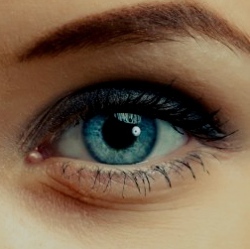
IBM created a computer chip that works like a brain. Now, Samsung has used it to create a biologically inspired digital eye. The IBM chip, called TrueNorth, is built of 4,096 tiny computing cores that form about a million digital brain cells. They act like the brain’s neurons, sending messages to one another to process data.
The design, known as neuromorphic computing, marks a dramatic departure from traditional chips that run software packaged into strict sequences of instructions. Neuromorphic chips are also optimized to get large amounts of processing done without consuming as much power as traditional chips.
Samsung has adapted TrueNorth into its Dynamic Vision Sensor that processes video imagery quite differently than traditional digital cameras.
"Each pixel operates independently" and pipes up only if it needs to report a change in what it’s seeing, said Eric Ryu, a vice president of research at the Samsung Advanced Institute of Technology. He spoke Thursday at an IBM Research event celebrating the 30th anniversary of its Almaden lab on the outskirts of San Jose.
The result is a camera that can keep track of what’s going on at a remarkable 2,000 frames of video per second. Ordinary digital cameras typically max out at 120fps. The higher speed is useful for creating 3D maps, safety features on self-driving cars and new forms of remote controls that recognize gestures.
